The Ultimate Guide to Coach
Stock Market Traders
About The Author
Siddharth Rajsekar
Founder - Internet Lifestyle Hub
Siddharth Rajsekar aka Sidz is the founder of the Internet Lifestyle Hub, one of the world’s largest communities for coaches, trainers, teachers, and experts with over 20,000 members.
As an acclaimed lifestyle entrepreneur, Business World's 40 under 40 award winner, and international speaker, Siddharth has trained over 500,000 people in the last 10 years. Recognized as one of India’s leading and sought-after “info-marketing” specialists, Siddharth has worked closely with renowned International experts like Robert Kiyosaki, T Harv Eker, Tony Robbins, Brian Tracy, and Jack Canfield.
After running many multi-million-dollar online campaigns for companies and helping people make money online in the last 10 years, Siddharth has developed and perfected the Freedom Business Model. The Freedom Business Model focuses on helping people take their expertise online and building a super-profitable digital coaching business, without an office or employees.

His mission is to reform the education and employment system by building a new breed of Digital Leaders, based on the core principles of humanity and simplicity and by enhancing one’s social skills, happiness, and overall productivity.
He is the author of this book, “You Can Coach” which decodes all the steps for experts to successfully PLAN, LAUNCH, and GROW a digital coaching business to six figures a month. Wearing multiple hats, Siddharth is a husband of a loving wife, a father of 2 boys, a minimalist, futurist, spiritualist, a YouTuber who has published over 300 videos, as well as a podcast host!
1. Are You Cut Out To Coach Stock Market Traders?
Navigating the stock market can be a daunting task, especially for beginners. With its complex jargon, intricate strategies, and unpredictable nature. This is where stock trading coaching becomes invaluable. These are some of the reasons why traders seek out coaches to help them gain the necessary skills and confidence to succeed.
To be a successful stock market trader in India, there are several key areas of knowledge that an aspiring trader should acquire.
Here are some essential things a stock market trader in India needs to know:
Basics of the Stock Market:
Understand the fundamentals of the stock market, including how it functions, the role of stock exchanges (such as the National Stock Exchange of India and the Bombay Stock Exchange), and the various participants involved.
Market Indices:
Learn about major stock market indices in India, such as the NIFTY 50 and the SENSEX, and how they are calculated. These indices represent the overall performance of the stock market and can provide insights into market trends.
Types of Trading:
Familiarize yourself with different trading methods, such as intraday trading (buying and selling stocks within the same trading day), swing trading (holding stocks for a few days to weeks), and long-term investing. Each approach has its own strategies, risks, and time horizons.
Fundamental Analysis:
Develop an understanding of fundamental analysis, which involves evaluating a company's financial health, analyzing its balance sheet, income statement, and cash flow statement, and assessing its industry position, management, and competitive advantage. Fundamental analysis helps traders identify undervalued or overvalued stocks.
Technical Analysis:
Learn about technical analysis, which involves studying historical price and volume data to identify patterns, trends, and indicators that can help predict future price movements. Understand concepts like support and resistance levels, trendlines, moving averages, and popular technical indicators used in India, such as RSI (Relative Strength Index) and MACD (Moving Average Convergence Divergence).
Risk Management:
Develop a solid risk management strategy to protect your capital and manage potential losses. This includes setting stop-loss orders, diversifying your portfolio, and determining your risk tolerance. Understanding position sizing and leveraging are crucial to avoid excessive risk-taking.
Market News and Events:
Stay updated with the latest news, economic indicators, corporate announcements, and government policies that can impact the stock market. Follow reliable financial news sources and be aware of events like company earnings releases, budget announcements, and regulatory changes.
Trading Platforms and Tools:
Get familiar with the online trading platforms offered by brokerage firms in India. Understand their features, order types, and how to use technical analysis tools and charts effectively. Practice using virtual trading platforms to gain experience without risking real money.
Trading Psychology:
Recognize the psychological aspects of trading, including controlling emotions like greed and fear, maintaining discipline, and having a rational approach to decision-making. Understand that losses are a part of trading and learn from mistakes to improve your strategy over time.
Regulatory and Taxation Aspects:
Understand the regulatory framework of the stock market in India, including the role of the Securities and Exchange Board of India (SEBI). Familiarize yourself with taxation rules related to stock market transactions, including capital gains tax and tax on dividends.
Remember, stock market trading involves risks, and it's essential to continuously educate yourself, stay updated, and adapt your strategies based on market conditions. Seeking guidance from experienced professionals or financial advisors can also be beneficial as you navigate the complexities of the Indian stock market.
After being fully conversant with all these fundamentals a stock market trader still needs guidance.
Overcoming Information Overload:
The stock market has a lot of information, which can confuse traders. It's like having too many things to look at all at once. News headlines, financial reports, and expert opinions flood the market, making it challenging to filter out the noise. This overwhelming influx of information can lead to confusion and analysis paralysis, hindering traders from making well-informed decisions. A coach can assist by establishing a structured research process, guiding traders to reliable sources, and providing frameworks for analyzing information effectively
A coach helps traders focus on the important stuff and understand it better. They act like a guide, showing traders what to pay attention to and helping them make sense of the information. This way, traders can make smarter decisions without feeling overwhelmed.
Developing a Solid Foundation:
To trade well, you need to know the basics. It's like building a strong house on a solid foundation. A coach explains things in a simple way, like how stocks work (which are like pieces of a company) and different ways to invest. They also teach about managing risks, which is like being careful with your money and building a good investment plan, which is like having a roadmap for your trading journey. A stock market coach simplifies complex jargon, explaining concepts in plain language, and breaking down intricate strategies into digestible bits.
Coaches introduce traders to fundamental principles such as the workings of stocks, bonds, and indices, as well as different types of investment vehicles. They also cover key topics like risk management, diversification, and portfolio allocation. With this knowledge, traders can make informed decisions and develop a solid framework for their trading journey. For beginners, this means grasping the basic concepts, terminologies, and mechanics involved in trading. A stock market coach simplifies complex jargon, explaining concepts in plain language, This foundation helps traders understand how the market works and make better decisions. Coaches introduce traders to fundamental principles such as the workings of stocks, bonds, and indices, as well as different types of investment vehicles. They also cover key topics like risk management, diversification, and portfolio allocation. With this knowledge, traders can make informed decisions and develop a solid framework for their trading journey.
Personalized Guidance and Feedback:
Every trader is different, just like every person has their own strengths and weaknesses. A coach understands this and gives advice that fits each trader's goals and style. It's like having a personal teacher who knows you well. They also help traders learn from their mistakes and improve their strategies. It's like having someone watch you play a game and tell you how to get better. This personalized help makes trading easier and more effective for each trader.
Emotional Support and Confidence Building:
Trading can be stressful. It's like being on a roller coaster ride with your money. A coach supports traders emotionally and helps them stay calm and make smart decisions. They understand that feelings like fear and excitement can make it hard to think clearly. The coach gives strategies and techniques to manage these emotions, like taking deep breaths or thinking long-term. This emotional support helps traders feel more confident and in control of their trading.
Each trader has unique strengths, weaknesses, and goals. A stock market coach recognizes this individuality and provides customized guidance and feedback. They work closely with traders to identify their risk tolerance, investment objectives, and preferred trading style. By understanding these factors, coaches can tailor their advice to suit the specific needs of the trader. Coaches provide ongoing support and feedback, helping traders refine their strategies, correct mistakes, and develop disciplined trading habits. They review trades, analyze performance, and offer constructive criticism to help traders improve. Coaching is about more than just answering questions - it's about helping your students reach their full potential by providing them with tools and resources that will allow them to do so.
Learning from Experienced Professionals:
Coaches are experts who have been successful in trading. They have a lot of experience, like someone who has been on many adventures and knows the way. Traders can learn from their experiences and avoid common mistakes. It's like having a wise mentor who shows you the right path. The coach shares stories, tips, and strategies that have worked for them. This helps traders feel more confident and make better decisions in the stock market.
In conclusion, coaching is important for traders because it helps them handle information overload, understand the basics, get personalized advice, stay calm in stressful situations, and learn from experts. It's like having a helpful guide by your side as you navigate the stock market, making your journey smoother and increasing your chances of success.
This personalized approach ensures that traders receive guidance that aligns with their goals and maximizes their potential for success. They have firsthand knowledge of various market conditions, trading strategies, and investment approaches. By learning from these seasoned professionals, traders can gain insights and perspectives that can significantly impact their trading success.
Coaches share their experiences, lessons learned, and successful strategies with traders. They highlight common pitfalls to avoid and provide guidance on adapting to changing market dynamics. This exposure to real-world trading scenarios allows traders to accelerate their learning curve and make more informed decisions. Learning from the experiences of successful professionals can increase traders' confidence, broaden their perspectives, and enhance their ability to adapt to different market conditions.
Emotional Support and Confidence Building:
Emotions play a significant role in stock market trading. Fear, greed, and uncertainty can cloud judgment and lead to impulsive decisions that may result in losses. A stock market coach acts as a source of emotional support, reminding traders to stay rational and disciplined amidst market fluctuations. Coaches help traders develop strategies to manage emotions effectively, teaching techniques such as setting realistic expectations, maintaining a long-term perspective, and utilizing risk management tools. By instilling confidence in traders, coaches empower them to stay focused on their trading plans, withstand market volatility, and avoid making decisions based solely on emotional reactions. This emotional support is vital in helping traders navigate the psychological challenges associated with trading.
The ability to communicate well is a valuable asset that can have huge benefits in many areas of life. Stock market trading also requires communication skills; developing the ability to speak effectively can open up a world of opportunities.
Developing the ability to speak well is a worthwhile investment that can pay off in many ways.
What are the requirements to coach stock market traders?
To become a stock market coach, you need a combination of financial knowledge, experience in trading, and the ability to effectively communicate and educate others. While there are no specific legal requirements, the following qualifications and skills are typically considered important for stock market coaches:
Expertise in Stock Market Trading:
You should have a deep understanding of the stock market, including various investment strategies, technical and fundamental analysis, risk management, and market dynamics. It's important to have a proven track record of successful trading or investing.
Knowledge of Financial Instruments:
Familiarize yourself with different financial instruments such as stocks, bonds, options, futures, and exchange-traded funds (ETFs). Understanding how these instruments work and their associated risks will enable you to provide comprehensive guidance.
Experience in Market Analysis:
Proficiency in analyzing market trends, interpreting financial statements, and conducting thorough research is crucial. This involves studying economic indicators, company financials, industry trends, and news that impact stock prices.
Communication and Teaching Skills:
Effective communication skills are vital for conveying complex financial concepts to individuals with varying levels of expertise. You should be able to articulate ideas clearly, listen actively to clients' concerns, and provide constructive feedback.
Coaching and Mentoring Abilities:
Being a good coach involves motivating, inspiring, and guiding individuals toward their financial goals. You should have the patience, empathy, and ability to understand your clients' needs and tailor your coaching approach accordingly.
Regulatory Awareness:
Familiarize yourself with the legal and regulatory framework governing the stock market. Stay updated on changes in rules and regulations to ensure compliance and provide accurate information to your clients.
Continuous Learning:
The stock market is constantly evolving, so it's essential to stay updated with the latest trends, strategies, and technological advancements. Continuously expand your knowledge through reading books, attending seminars, participating in webinars, and networking with other professionals.
Ethical Conduct:
Upholding high ethical standards is critical as a stock market coach. Clients trust you with their financial well-being, so it's important to act in their best interests, avoid conflicts of interest, and maintain confidentiality.
As of September 2021, there are no specific legal requirements in India to coach stock traders. In India, providing coaching or education related to stock market trading falls under the domain of financial education and advisory services.
However, it is important to note that if you provide specific investment advice or manage clients' funds on their behalf, you may be subject to regulatory requirements and licensing. In such cases, you might need to register as a SEBI-registered investment advisor or obtain the necessary licenses as per the regulations set forth by the Securities and Exchange Board of India (SEBI).
It's always advisable to consult with a legal professional or seek guidance from SEBI or other relevant regulatory bodies in India to ensure compliance with any existing or updated regulations regarding financial education or advisory services. Regulations can change over time, so it's important to stay informed about the latest guidelines and requirements.
2. Creating A Curriculum
A typical experience knowledge giver, or coach, is an experienced and skilled professional who takes on the task of giving experience to others. People who choose knowledge-giving tend to have been successful in some other line of work before turning to coaching as a profession. They can gain satisfaction knowing that these experiences serve another purpose.
Knowledge sharing is the process by which knowledge is shared with someone else. This knowledge sharing used to happen only in person but is now freely available online. It can be on such a diverse range of subjects as wellness, painting, strength training, or accounting.
As a knowledge provider, you will help others by providing them with advice on how they can fulfill their dreams and achieve their goals. You will offer knowledge that is helpful to them because it has worked for you or other people you know. It goes without saying that to be successful as a knowledge provider, you need to have expert-level knowledge on your topic, either through academics or through a sheer wealth of experience.
By sharing your knowledge and expertise, you can positively impact and influence the lives of others, helping those people get closer to fulfilling their dreams. In the conventional scenario, a coach is a person with skills and experience who helps to teach or develop those same skills in others.
Coaches work with their clients to improve their performance in a specific area. The focus is on helping the client learn; not merely teaching them. Thus, your coaching shouldn't be about memorization of information overload. Don’t show off your knowledge, approach it from the perspective of helping. People should get results faster.
Formal education can make you a living but self-education will make you a fortune - Jim Rohn
As a coach, you are different things to different people. Your clients will ask you to
Provide Guidance
Provide Support
Provide expertise to help enhance their skills
Help them overcome challenges
Help achieve their goals.
Creating a curriculum for stock market traders involves designing a structured and comprehensive learning plan that covers essential topics and progresses in a logical manner.
Here is a step-by-step guide to help you create a curriculum for your stock market traders:
Identify the target audience:
Determine the level of expertise and knowledge your target audience possesses. Are you catering to beginners, intermediate traders, or advanced professionals? This will help you tailor the curriculum to their specific needs.
Define learning objectives:
Clearly outline the goals you want your traders to achieve by the end of the curriculum. Examples could include understanding basic concepts, developing technical analysis skills, mastering risk management techniques, or building a solid trading strategy.
Break down the curriculum into modules:
Divide the curriculum into modules or sections based on key topics. Some possible modules could include an introduction to the stock market, fundamental analysis, technical analysis, risk management, trading psychology, and advanced trading strategies.
Determine the sequence:
Determine the logical order in which the modules should be presented. Start with foundational concepts and gradually progress to more advanced topics. Each module should build upon the knowledge gained in the previous ones.
Select appropriate learning resources:
Identify the learning resources that will be used to teach each module. This can include textbooks, online articles, videos, webinars, case studies, interactive exercises, and real-time market analysis.
Develop lesson plans:
Break down each module into individual lessons or sessions. Outline the specific topics to be covered in each lesson, the learning objectives, the teaching methods, and any exercises or assessments to reinforce learning.
Incorporate practical exercises:
Include practical exercises, simulations, or trading scenarios to allow traders to apply their knowledge and practice their skills. This could involve paper trading, analyzing real case studies, or participating in trading competitions.
Provide supportive materials:
Supplement the curriculum with reference materials, glossaries, cheat sheets, and recommended readings to deepen understanding and provide additional resources for self-study.
Assess progress and learning outcomes:
Incorporate assessments or quizzes at the end of each module or lesson to evaluate traders' comprehension. This will help you identify areas where additional support or revision may be required.
Continuous improvement:
Regularly review and update the curriculum to reflect changes in market trends, new trading techniques, or regulatory updates. Seek feedback from traders to understand their learning experience and make necessary improvements.
Remember, the curriculum should be flexible to accommodate different learning styles and allow for customization based on the traders' needs. Encourage interaction, engagement, and discussion throughout the learning process to create an active learning environment.
Sourcing content for a curriculum involves several key steps:
Define the scope of the curriculum:
The first step is to define the scope of the curriculum, including the learning objectives, target audience, and specific topics to be covered. This will help you identify the types of content that are relevant and necessary for the curriculum.
Conduct research:
Identify sources of content for the curriculum. This can include textbooks, articles, reports, case studies, and other publications. You can also search for online resources, such as webinars, podcasts, and videos. The initial phase of creating a curriculum will involve intensive research. Have leaders in this industry on your radar and model them. Study how they have structured their programs on Google, YouTube, Instagram, and podcasts. If you invest in their programs, you’ll get a lot of ideas on precisely what they are doing to achieve that kind of success.
Evaluate the quality of the content:
Evaluate the quality of the content to ensure that it is accurate, up-to-date, and relevant to the learning objectives. Consider the credibility of the source and the expertise of the author.
Determine the format of the content:
Determine the format of the content that will work best for the curriculum. This can include written materials, audio and video resources, and interactive content.
Adapt and customize the content:
Meet the specific needs of the curriculum and the target audience. Consider adding examples and case studies that are relevant to the participant's work environment.
Obtain permission to use copyrighted material:
If you plan to use copyrighted material, such as excerpts from books or articles, be sure to obtain permission to use the content from the copyright owner.
Remember to keep the content relevant and engaging for the target audience. Use a variety of content formats to keep the curriculum interesting and appeal to different learning styles. And always ensure that the content is accurate and up-to-date to ensure the credibility of the curriculum.
Use examples that are relatable to their work environment, and ensure that the materials are easy to understand and apply to their jobs.
You will first need to work on the attitude of stock market traders. This is an important factor in determining their success and satisfaction in their career. What people want is a clear-cut path to achieving their goals, and they want it fast. What people will pay you for is not the volume of information, but how simple you can make it for them. How fast can you get them a result?
Before deciding to take action and achieve results, the student must first develop the proper mindset, and to do so, the roadblocks that are holding them back must be removed. This is a list of books that you should recommend to your students.
12 “MUST READ” Books -
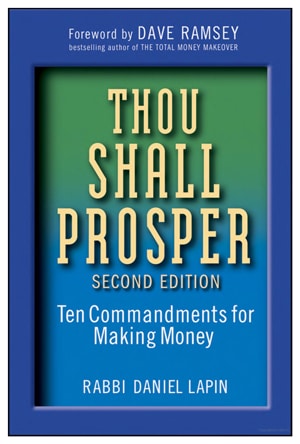
1. Thou Shall Prosper
Ten Commandments for Making Money-by Daniel Lapin. Principles on which Jewish people build wealth while debunking the myths about their reputation. The true principles of wealth creation show that creating true wealth is a spiritual activity if you do it with the right mindset and perspective.

2. Becoming Supernatural
How Common People Are Doing the Uncommon-by Joe Dispenza. Tracking brain frequency and how you can change your life through spirituality. Understanding the link between spirituality and science

3. Think Simple
How Smart Leaders Defeat Complexity-by Ken Segall. How Steve Jobs used product design, simplicity, consumer experience.
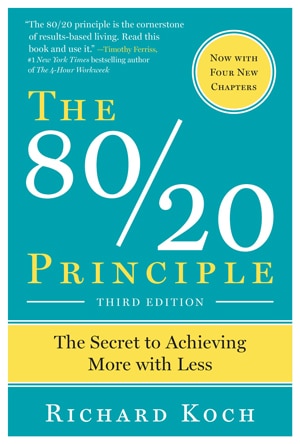
4. The 80/20 Principle by Richard Koch
Pareto's principle is evaluated as per the 80/20 rule. How 20% of your efforts can reap 80% of your results.

5. Hackers and Painters by Paul Graham
Abstract thinking and coding to do things beyond boundaries. By thinking outside the box, you can bend and break the rules.
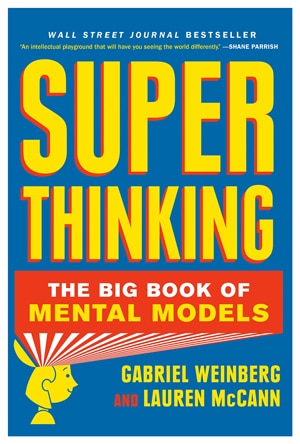
6. Super Thinking
Upgrade Your Reasoning and Make Better Decisions with Mental Models -by Gabriel Weinberg. mental models to think out of the box and better decisions
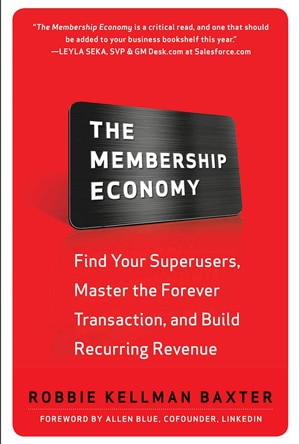
7. The Membership Economy
Find Your Super Users, Master the Forever Transaction, and Build Recurring Revenue eBook-by Baxter, Robbie Kellman.

8. Zero to One
Notes on Start-Ups, or How to Build the Future -by Peter Thiel. How to dominate your market with amazing ideas. How to build reachability, and achieve phenomenal growth over the long term to reach out to a large number of people.

9. Atomic Habits
An Easy and Proven Way to Build Good Habits and Break Bad Ones -by James Clear. Focus and discipline make all the difference
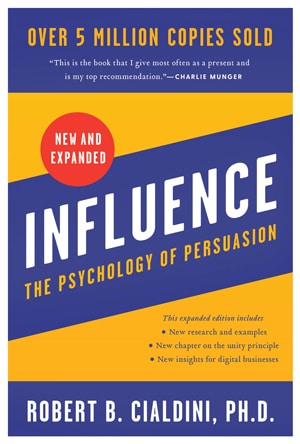
10. Influence, New and Expanded
The Psychology of Persuasion, -by Robert B. Cialdini. Sales, and psychology of conversion. Persuasion, sales, and buying triggers.

11. Lead the Field by Earl Nightingale
Your market/niche/space and how to position yourself. Leadership and building community for revolutions and movements
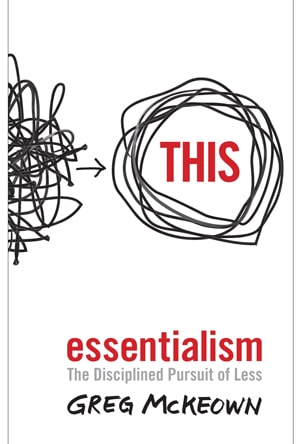
12. Essentialism
The Disciplined Pursuit of Less -by Greg McKeown. Simple living and high thinking. Have less but have the best and you will be free
When you incorporate success stories into your curriculum, they will create mind shifts for the new people who are joining your student community. They should feel like, "Wow, if this person can do it, I can do it.” That shift is what you must install at the start of your course.
When you’re designing a program or a course for speakers, you need to bring your personality into that. When your teaching reflects your personality, people will connect with you.
When people realize that you're not there solely for your profits but for their benefit, that’s when the needle will move on your revenues.
Every part of your curriculum should be a reflection of you. Once more, they get the experience of saying, “Wow, I’m at the right place at the right time.” This is the best customer experience you can hope for. The quality of your product is not what you think of as quality; it happens when your customer feels that they are getting the best value for the money that they’ve invested and they’re able to get the information in a remarkably simple, smooth, and sublime way. When you do this, you don’t have to “market” quality; quality speaks for itself.
Here are some key attitudes that you can teach traders to cultivate:
A positive mindset: This is essential for stock market traders, as it enables them to approach challenges and opportunities with optimism and enthusiasm. This can help them stay motivated and resilient in the face of setbacks.
A Growth mindset: involves a belief in one's ability to learn and grow, and a willingness to embrace new challenges and opportunities. This attitude can help your clients continuously develop their skills and knowledge, and adapt to changes in their field.
Professionalism: encompasses qualities such as integrity, responsibility, and respect for others. This attitude can help your clients build trust and credibility with their colleagues, clients, and in turn, their students when they start coaching.
Goal-oriented: Working professionals should have a clear sense of their personal and professional goals, and work towards achieving them. This can help them stay focused and motivated, and make progress toward their desired outcomes.
Continuous learning: Stock market professionals should have an attitude of continuous learning, seeking out new opportunities for skill development and knowledge acquisition. This can help them stay up-to-date with changes in their field and improve their overall effectiveness.
By cultivating these attitudes, your students can position themselves for success and fulfillment in their careers.
3. Top Tools To Use As a Coach
There are three concepts to follow before choosing a tool.
Choose The Best
Don't just pick a tool because it's cheap. "Don't be cheap on your journey to greatness." You want to be great. Don't be cheap. In other words, just because the tool is cheaper, don't pick it. Pick what is best, pick something that has great customer support, and pick something that has been built for that purpose.
Aim For Mastery
It is not about the tool. It is about how you use the tool. For example, Photoshop is a tool. Anyone can download Photoshop, but how you design and how you aesthetically use the tool are going to determine the results. You've got to aim for mastering the tools, which is very important.
The Success Ratio
Everyone wants to know about the latest hack or tool, as if the tool were responsible for success. No. 80% of your success is in your internal game, and 15% of your success is in external communication. Only 5% of your success is dependent on the tools.
When teaching stock market traders, it's important to equip them with the necessary tools to analyze and make informed decisions in the dynamic market environment.
Here are some essential tools that can be used to teach stock market traders:
1. Stock Market Simulators:
Using virtual trading platforms or stock market simulators allows traders to practice trading strategies without risking real money. These platforms provide real-time market data, order placement capabilities, and portfolio tracking, enabling traders to gain hands-on experience and test their trading strategies in a risk-free environment.
2. Trading Platforms:
Introduce traders to popular trading platforms used in the Indian stock market, such as Zerodha, ICICI Direct, or Upstox. Teach them how to navigate the platform, execute trades, analyze charts, access market data, set up alerts, and monitor their portfolio. Demonstrate different order types and advanced features provided by the platform.
3. Charting Tools:
Teach traders how to utilize charting tools for technical analysis. Introduce them to charting platforms or software that offer a wide range of technical indicators, drawing tools, and customization options. Examples include TradingView, Amibroker, or MetaTrader. Guide traders on interpreting charts, identifying patterns, and using indicators effectively.
4. Fundamental Analysis Resources:
Provide access to reliable sources of financial information for fundamental analysis. This includes financial news websites (such as MoneyControl, Economic Times, or BloombergQuint), corporate annual reports, financial statements, and databases that provide company-specific data, ratios, and historical performance. Teach traders how to analyze this information to evaluate the financial health and prospects of companies.
5. Economic Calendars:
Introduce traders to economic calendars that provide information on upcoming economic indicators, central bank announcements, and important events. These calendars highlight key data releases that can impact the stock market, such as GDP growth, inflation rates, interest rate decisions, and employment reports. Websites like Investing.com or Forex Factory offer comprehensive economic calendars.
6. Stock Screeners:
Teach traders how to use stock screeners to filter stocks based on specific criteria. Stock screeners allow traders to narrow down their focus to stocks that meet their predefined requirements, such as market capitalization, industry sector, earnings growth, or valuation ratios. Screeners available on financial websites or brokerage platforms can be used for this purpose.
7. Risk Management Tools:
Emphasize the importance of risk management and introduce traders to tools that help them manage their risk exposure. Teach them how to set stop-loss orders, calculate position sizes based on risk tolerance, and utilize risk-reward ratios. Spreadsheet tools like Microsoft Excel or Google Sheets can be used to create trade journals and risk management calculators.
8. Trading Psychology Resources:
Share books, articles, or videos that focus on trading psychology to help traders develop the right mindset and emotional discipline. Resources that cover topics like controlling emotions, managing stress, and maintaining discipline during trading can be valuable in helping traders handle the psychological challenges of the market.
9. Online Forums and Communities:
Encourage traders to join online forums and communities where they can interact with other traders, share insights, and learn from experienced market participants. Platforms like TradingView, Reddit, or specialized trading communities can provide a supportive environment for traders to discuss strategies, seek guidance, and exchange ideas.
10. Case Studies and Real-Life Examples:
Utilize case studies and real-life examples to illustrate concepts and demonstrate practical applications of trading strategies. Show traders historical charts, company news, and market events to help them analyze market behavior and understand the impact of different factors on stock prices.
By providing traders with these tools and resources, you can enhance their understanding of the stock market, develop their analytical skills, and empower them to make well-informed trading decisions.
As a coach, you will need a social media presence so more people know about you.

Social Media
You must have a social media presence when people look for you. You have to have a Facebook page and an Instagram account; you have to have all these things out there, about what you do and how you do it. Don't try to be someone else because you think they're cool. The main thing is to be yourself. And then you're going to attract people who need to hear what you have to say because your journey is unique. Your stories of the obstacles you overcame, the principles that helped you, and the books you read, that's your unique story, and it's different from anyone else's. And so think about being real, being authentic, and being vulnerable.
You have to be doing Instagram Live and Facebook Live. You have to be recording those. And to be in their archive, you must have a Facebook channel or, at the very least, be doing Facebook videos that people can watch. You must do all of these things as well as write a blog. You can record up to ten minutes of podcasts and share your point of view. You shared something you read in a book last night that touched you. You just read a newspaper account about something that annoyed you; people are interested in learning about new products and services. And you're developing a relationship.
Social media platforms such as Facebook and Instagram can be used to create communities of like-minded individuals who are interested in wellness. You can use these platforms to share information, provide support, and connect with your clients.
Social media platforms like LinkedIn and Twitter can be used for networking, sharing insights, and promoting coaching services. LinkedIn and Twitter are popular social media platforms that coaches can use to establish their professional brand, connect with clients and colleagues, and share valuable content.

LinkedIn
Create a professional profile with LinkedIn to create a professional profile that showcases your coaching expertise and experience. Your profile should include a professional headshot, a summary of your coaching services, and endorsements from clients or colleagues.
Use LinkedIn to connect with clients and colleagues in your coaching niche. You can use LinkedIn to search for and connect with individuals who may be interested in your coaching services.
Share valuable content related to coaching, personal development, and leadership. You can share articles, videos, and infographics that provide insights and tips on achieving personal and professional goals.
Participate in discussions and connect with like-minded individuals in your coaching niche. You can share your expertise and contribute to discussions that may help you gain more exposure and credibility.

Twitter
Use this to create a professional profile that highlights your coaching services and experience. Your profile should include a professional headshot, a brief bio, and links to your website or blog. Use Twitter to share valuable content related to coaching, personal development, and leadership. You can share short tips, quotes, and links to articles or blog posts. Use hashtags on Twitter to increase your visibility and connect with individuals interested in coaching or personal development. You can use popular hashtags such as #coaching, #personaldevelopment, and #leadership.
Twitter to engage with clients and colleagues in your coaching niche. You can reply to tweets, participate in discussions, and retweet content that may be of interest to your followers.

Calendly
It’s a simple tool to set up your meetings and available time slots. You can try this tool out, it starts with a free version. There is an option to sync with Zoom in their premium version. As soon as someone books a time slot with you, a Zoom link automatically gets created and sent to them. This will save you a lot of time. All you need to do is open your calendar and click on the Zoom link to start your meeting.

Mint
If you want to get your personal finances in order and get all your bank accounts integrated into one place, go to mint.com, where you can set up a free account and set your budgets and plan your money management.


Payment Gateways
While all the above systems are core to your business, it’s never complete until you have your payment gateways set up to make it smoother for you to collect payments and track your sales.
1. Instamojo - If you are based in India, this is one of the best payment collection engines. It’s quite easy to set up your account if you already have your company and bank accounts set up. You can create different products and payment links in this system. Once set up, you can share the payment link with your prospects, where they will be able to make a payment via credit card, debit card, net banking, and other options. The best part is that once the payment is received, you will be able to track all your data on a single dashboard. Additionally, you will also be able to process refunds and send messages to your customers from this platform.
2. RazorPay - One of the best payment collection engines if you reside in India, it has an API integration with other payment engines

Online Survey Tools
Survey tools like SurveyMonkey and Google Forms can be used to collect feedback from coaching clients, assess their progress, and identify areas for improvement.
SurveyMonkey and Google Forms are online survey tools that coaches can use to gather feedback, conduct research, and assess client satisfaction. Conduct client feedback surveys with SurveyMonkey or Google Forms to create surveys that gather feedback from your coaching clients. You can use these surveys to assess client satisfaction, gather testimonials, and identify areas for improvement. You can use these surveys to identify trends, gather data on your target audience, and assess the competition. You can use these surveys to gather information on client goals, preferences, and learning styles.











